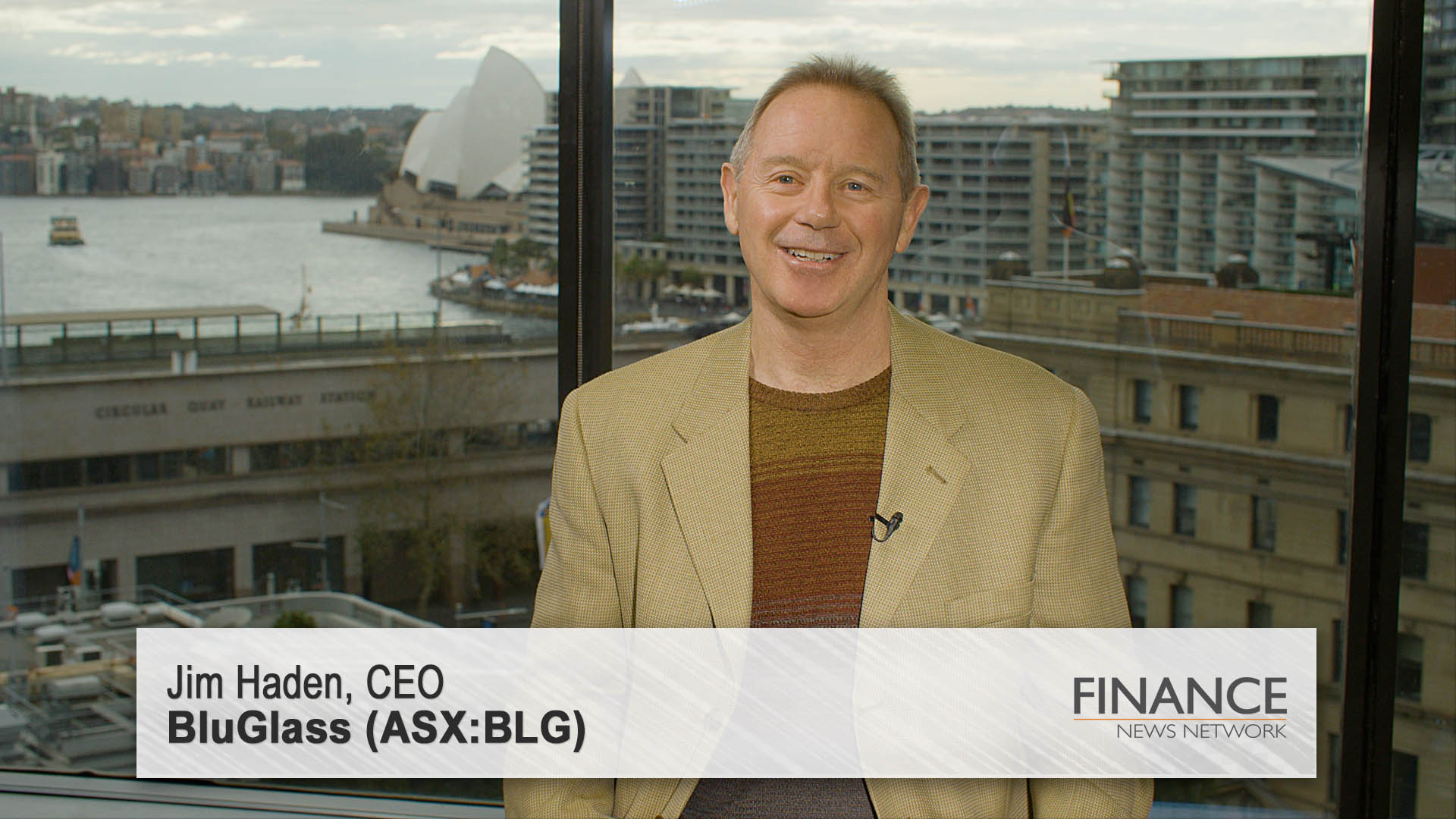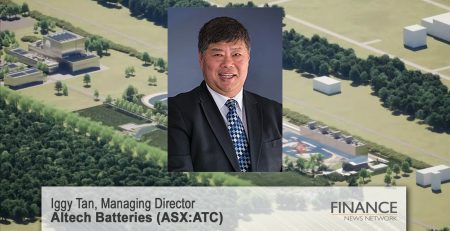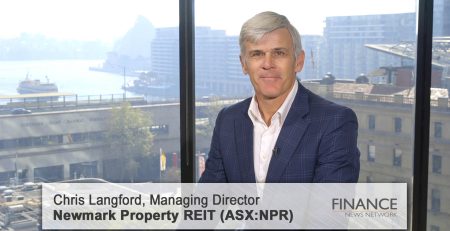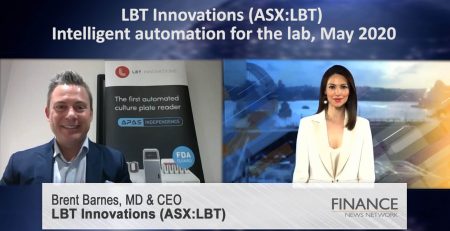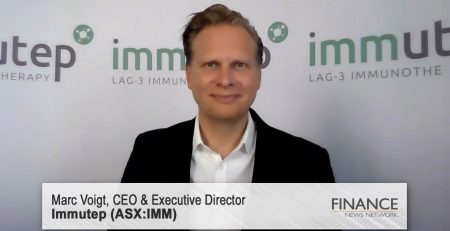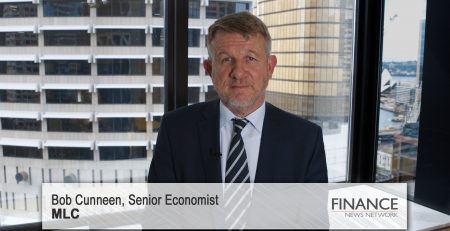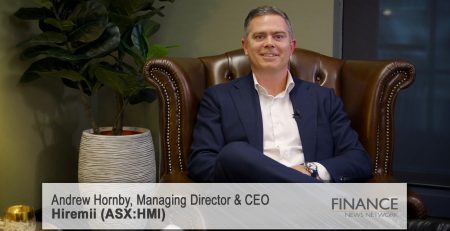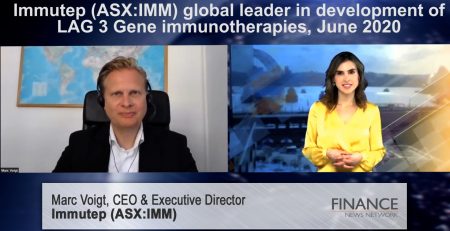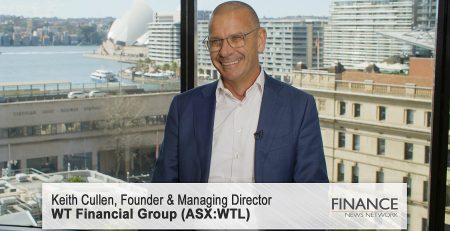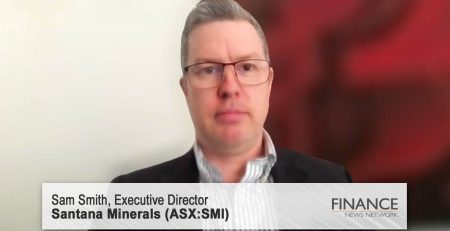Lasers for quantum, biotech and industrial applications
BluGlass Limited (ASX:BLG) CEO Jim Haden provides an update on the company, discussing customers and market, product improvements, vertical integration and roadmap.
Paul Sanger: We're talking today with BluGlass (ASX:BLG). It has a market cap of $65m. The company has been developing leading-edge semiconductor manufacturing technology and devices for more than a decade. It is a global provider to the gallium nitride photonics industry, delivering cutting-edge lasers for the industrial, defence, display and scientific markets. We welcome back today BluGlass CEO Jim Haden. Jim, welcome back to the network.
Jim Haden: Thank you, Paul. It's great to be here.
Paul Sanger: Now, Jim, when we last spoke, the company had launched several GaN laser products that have created quite a bit of excitement with potential customers. You've since secured initial orders for testing in customer applications. Can you tell us what industries and applications your lasers are now being tested in, and what qualification in customer products is expected to be completed?
Jim Haden: Yeah, the industries that we've got traction in so far are the biotech and the scientific. Scientific would be in the quantum clocks applications, quantum sensing and so forth. Biotech would be looking at mitigating virus and bacteria type of things. And then we also get interest in the industrial area, some for mapping surfaces and for machine guidance, those types of applications. There is some interest in the 3D printing areas as well.
So, in these different industries and applications, what we find is there's basically two types of customers that we're talking to. And there's customers that aren't getting their products from the big guys in this industry, and there's those that already have them.
And the ones that are not getting the products are the ones that we're getting the best traction with because they don't have anything to do their product development. So what they're doing is they're buying our lasers and putting them in their products. It's a qualification that they have to go through to make sure that their product works correctly.
We're also seeing some customers that do have access to the big guys, but maybe they don't have quite the wavelengths that they want and so forth. We're getting feedback from both of those groups, and some of the more mature companies we're getting very valuable feedback where they're testing our lasers against the bigger guys in the industry. And what they're saying is they really love our performance, and then they're giving us feedback that is really helping us hone our products and figure out where we need to be better, and that's extremely valuable to us.
Paul Sanger: And, at a recent trade show, BluGlass launched enhanced GaN lasers with significant improvements to light emissions, power conversion efficiencies and voltage. What's driving these improvements?
Jim Haden: I've spoken previously about the key areas of a laser, where you have to have the good contacts for the lasers, the N and P side contacts. You have to have great facets. That's the mirrors where the light bounces around and comes out of the laser. You need to have good epi. And you have to have the thermal path to get the heat away from the laser.
So, we are actually making progress in all three of those in what I would call a continuous progress phase. So, we have those types of things that are making incremental improvements, but we also have what we would call breakthrough improvements. And those breakthrough improvements will give us quantum leaps in performance.
An example of that would be in January when we were in San Francisco showing our products. We had a 450 nanometer laser that was about 16 per cent power conversion efficiency, which was basically how much power you put in, what is converted to optical output power. And just several months later in Munich last month, we had that at 25 for our multi-mode and 29 per cent.
Now, just to put that in perspective, Nichia’s, the single-mode product typically that they have on the market is 29 per cent. So, in that time, we made a quantum leap to performance that is now getting up near the big guys in some of our products. And so, that also, to reiterate, that had a quantum improvement, and we know what that improvement was, and we're going to move that into some of our other lasers as well. And then we've had incremental improvements along the way that, for instance, our 405 nanometers, it was around 25 per cent conversion efficiency, and now we're seeing 27, 28. So, we're having both of those types of improvements.
Paul Sanger: Jim, you've also launched a 397 nanometer alpha prototype, made significant improvements to your DFB (distributed-feedback) lasers with the University of Santa Barbara, California. Why are these products exciting customers? And do these lasers open up new targets for the company?
Jim Haden: Yeah, so those are two different but related. The 397 is getting into what we call the UV. And that's an interesting wavelength for people that are doing quantum computing, quantum sensing, those types of things. And a single-mode or the DFB, both are exciting for those applications as well.
So, it does open up more markets. The DFB will open up markets for what you call single-frequency lasers, and that's where you have very pure light. And the very pure light is very helpful because it excites the crystals that are used in quantum computing, quantum sensing. And those quantum sensing, for instance, can be used to sense magnetic pulses. And you have magnetic pulses when you move your muscles and so forth going through your nerves, those pulses can be used to operate prosthetics, for instance. And so it's very exciting for us to be able to be involved in those types of industries.
Paul Sanger: Jim, since acquiring your own production facility last year, you've been vertically integrating your supply chain. How has this progressed over the past quarter?
Jim Haden: It's progressing very well. We had outsourced that part of the process to five different contract manufacturers. We call them “CMs”. And we have moved four of those all internally so far. And that has helped us to do a couple of things.
One is we get faster turnaround in our fab, and we are identifying challenges to improve the performance. These things I talked about with the continuous improvement and the breakthrough would have been nearly impossible to do with the CMs. And so we're getting feedback from our wafers when we look at how… we have what we call online metrics on the wafer as it travels through the plant. And then we send them to Nashua and they test them. They test them similar to ways our customers test them. And then now that we're shipping products, we're getting feedback from the customers as well.
The fifth contract manufacturer where we're working with very closely, they're actually close in proximity to our Fremont fab, only about 30, 40 minutes away from us. And their engineers now work in our facilities sometimes, and our engineers go to their facilities. So, it's a very close collaboration, and we are learning from each other and that is helping us. So, we've slowed that one because of that close relationship, but that will continue to move into our facility as well.
Paul Sanger: And for those that are new to the story, what does the competitive landscape look like and who are your key competitors?
Jim Haden: There's a handful of companies. The two biggies are Nichia in Japan and Osram in Germany. Both of those are big LED companies, and they have high volumes and they leverage that. But what that does is they don't want to have what we would call a high mix. And so our model, we're coming in to be sort of a high mix of products, not a small number of products, and with more form factors than you can get from those other ones.
And also the big guys don't necessarily want to work with all of these small startup companies that have exciting applications, such as the prosthetics we were talking about. And so that gives us the opportunity to go after those. And there's a few other smaller companies that we're not really seeing much from yet, but we're keeping our eye on them.
Paul Sanger: China has recently imposed new export restrictions on gallium. Can you provide some detail on the changes and the impact of these new restrictions on BluGlass’s supply chain?
Jim Haden: Yeah, so we have a couple vendors that supply products that require those raw materials. What they have communicated to us is that they're not having a problem with their supply right now. So, there's no immediate issues. They have plenty of inventory. In fact, one of our suppliers that's in the United States, they get their raw materials all from recycling gallium arsenide products. And so they don't need any of the raw materials from China. So, so far it looks pretty good for us, and we're going to keep our finger on that pulse. We're going to see what happens. But so far we're not seeing any impact.
Paul Sanger: That's good to hear. And, lastly, what are the next milestones that investors should keep an eye out for for the next three to six months?
Jim Haden: Well, I think that we have some exciting ones. The ones that they're probably most excited about is will we get more customers and more orders? And we are in the cycle, and since the show in June, we are getting more customer interest from the ones that we already talked to. They came back and we had more meetings and so forth in Germany. But we're also finding new customers.
And one thing that we found is there's a lot of interest in China. China wasn't participating last year because they were still shut down. So, I think that would be an area to keep your eye out.
And then behind that is going to be, we're going to still focus on the continuous improvement, making better lasers that are going to then open up more applications. We're going to continue to push our RPCVD technology to increase our advanced products, like the DFBs, and really drive to longer wavelengths.
Paul Sanger: Jim Haden, many thanks for your time.
Jim Haden: Thank you.
Paul Sanger: Thank you.
Ends
Copyright 2023 – Finance News Network
Source: Finance News Network

